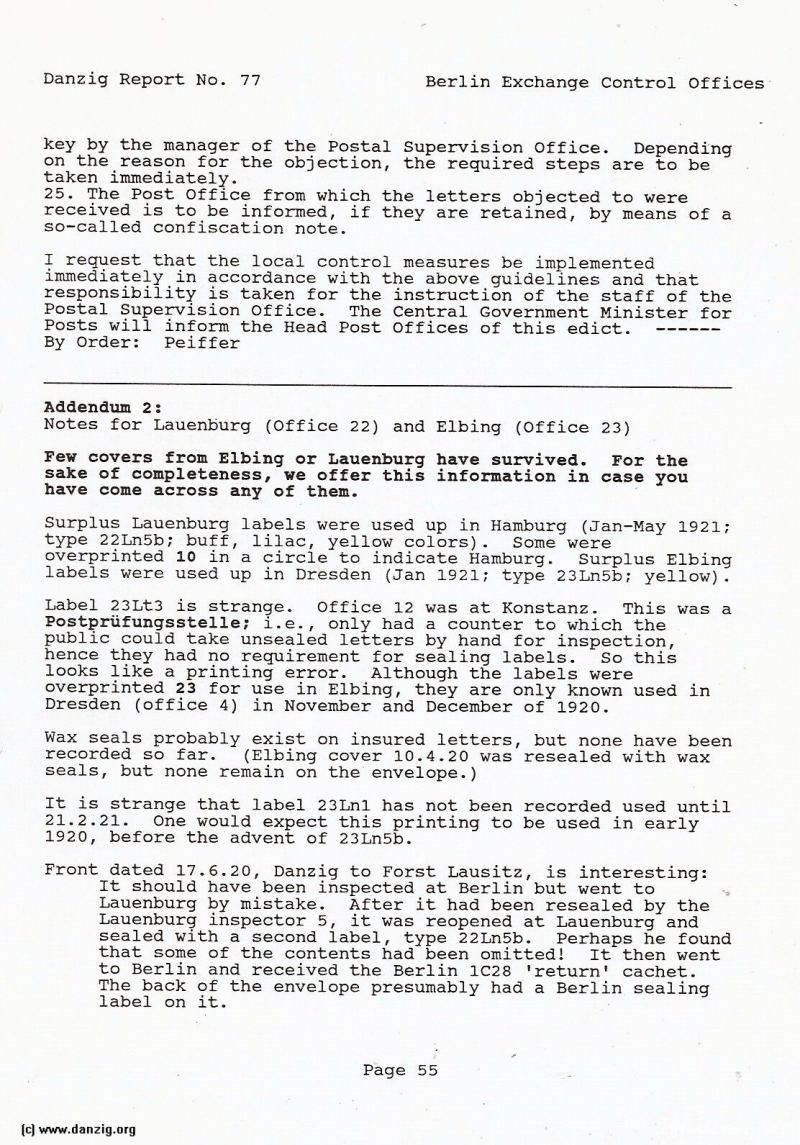
key by the manager of the Postal Supervision Office. Depending on the reason for the objection, the required steps are to be taken immediately.
25. The Post Office from which the letters objected to were received is to be informed, if they are retained, by means of a so—called confiscation note.
I request that the local control measures be implemented immediately in accordance with the above guidelines and that responsibility is taken for the instruction of the staff of the Postal Supervision Office. The Central Government Minister for Posts will inform the Head Post Offices of this edict.
By Order: Peiffer
Addendum 2:
Notes for Lauenburg (Office 22) and Elbing (Office 23)
Few covers from Elbing or Lauenburg have survived. For the sake of completeness, we offer this information in case you have come across any of them.
Surplus Lauenburg labels were used up in Hamburg (Jan-May 1921; type 22Ln5b; buff, lilac, yellow colors). Some were overprinted 10 in a circle to indicate Hamburg. Surplus Elbing labels were used up in Dresden (Jan 1921; type 23Ln5b; yellow).
Label 23Lt3 is strange. Office 12 was at Konstanz. This was a Postprüfungsstel].e; i.e., only had a counter to which the public could take unsealed letters by hand for inspection, hence they had no requirement for sealing labels. So this looks like a printing error. Although the labels were overprinted 23 for use in Elbing, they are only known used in Dresden (office 4) in November and December of 1920.
Wax seals probably exist on insured letters, but none have been recorded so far. (Elbing cover 10.4.20 was resealed with wax seals, but none remain on the envelope.)
It is strange that label 23Ln1 has not been recorded used until 21.2.21. One would expect this printing to be used in early 1920, before the advent of 23Ln5b.
Front dated 17.6.20, Danzig to Forst Lausitz, is interesting: It should have been inspected at Berlin but went to Lauenburg by mistake. After it had been resealed by the Lauenburg inspector 5, it was reopened at Lauenburg and sealed with a second label, type 22Ln5b. Perhaps he found that some of the contents had been omitted! It then went to Berlin and received the Berlin 1C28 ‘return’ cachet. The back of the envelope presumably had a Berlin sealing label on it.
Danzig Report Vol. 1 - Nr. 77 - October - November - December - 1992, Page 55.
Hits: 3062
Added: 03/07/2015
Copyright: 2025 Danzig.org

